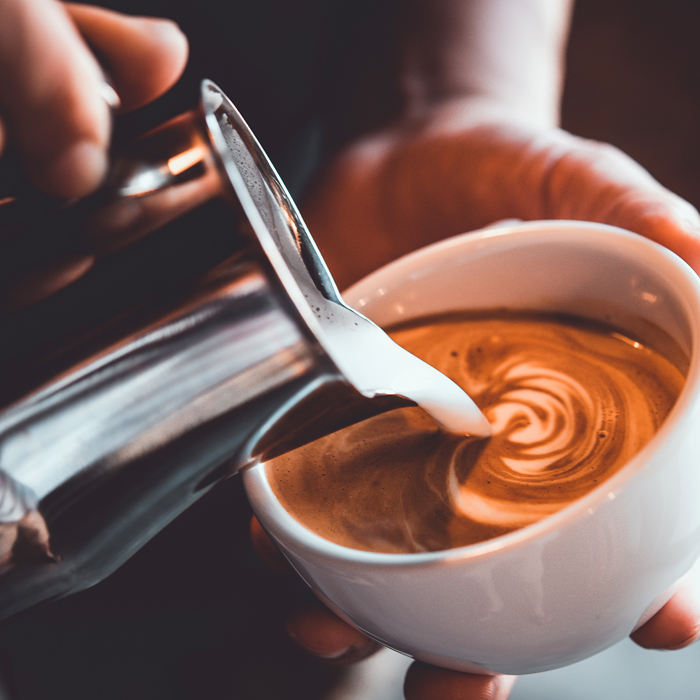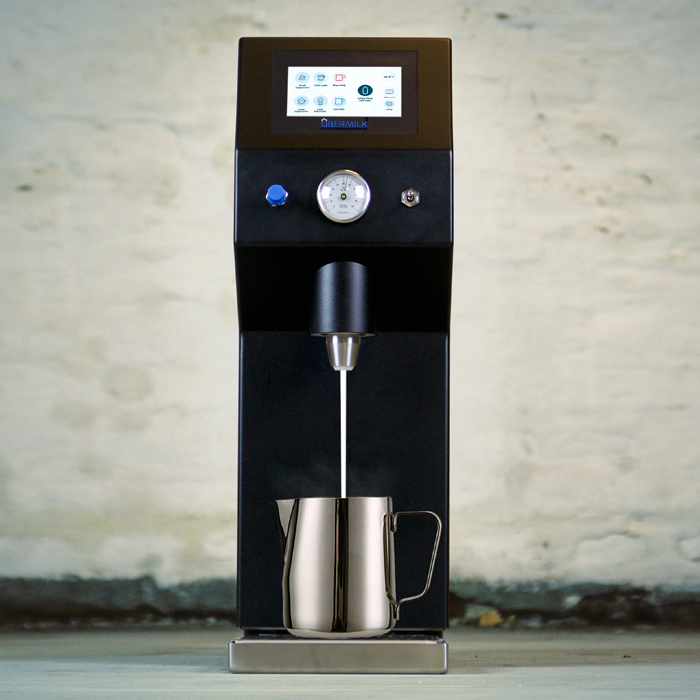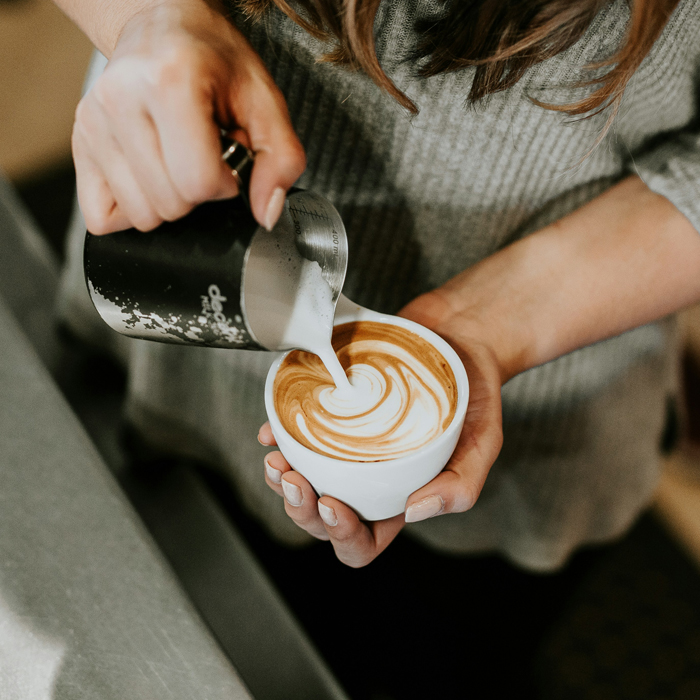Ask any barista and they’ll tell you the same thing: consistency is everything when it comes to making great coffee! And one of the most overlooked factors in that consistency is milk temperature. It’s not just about how hot the coffee is. The temperature of your milk affects mouthfeel, sweetness, and how clearly customers taste the distinct flavours of the coffee. Too hot, and you risk burning the milk (and your customer’s tongue). Too cold, and the texture falls flat, the sweetness is dulled, and the overall experience suffers.
Our friends at Seven Miles set out to find the most accurate and reliable way to heat milk to the ideal temperature. Through a series of tests, they compared four different methods used across cafés today: using the barista’s hand to gauge heat, Temptag stickers, milk jug thermometers, and the Ubermilk automatic steamer.
Aiming for 65°C
After multiple tastings and tests, it was found that milk steamed to around 65°C consistently produces the best results in flavour, texture and temperature. It’s hot enough to bring out sweetness and body in the milk, but not so hot that it mutes the complexity of the coffee or scorches the milk itself. This target temperature became the benchmark, a digital thermometer was used for accurate measurement throughout the testing.
The barista’s hand method
Still the most widely used technique in many cafés, using one’s hand to gauge milk temperature relies entirely on a barista’s experience and instinct. In the testing, Barista A consistently stopped steaming at an average of 62°C, while Barista B was slightly closer to the target, averaging 65.4°C.
Interestingly, although Barista B was more accurate overall, Barista A was more consistent, hitting similar temperatures across all runs. It was also noticed that neither barista’s sense of heat noticeably changed over time. Despite doing seven runs back to back, their perception didn’t seem to shift. This is a good sign for the reliability of the hand method under normal service conditions.

Temptag Stickers
Temptags are heat-sensitive stickers that change colour when the milk hits a specific temperature. Tags calibrated to 65°C were used and tested with both baristas, neither of whom had used the product before. Barista A reached an average of 66.3°C, while Barista B came in slightly lower at 64.2°C. Both were impressed by how well the stickers performed, especially given their lack of experience using them. However, while the tags were accurate, they still required the barista to watch carefully and stop the steam wand at the right time. In busy service, this small detail can have a big impact on workflow.
Milk Jug Thermometers
Next, traditional clip-on milk thermometers were tested. Both baristas were able to achieve very consistent results using this method. Barista A averaged 67.3°C, and Barista B landed at 67.5°C. The margin of error was relatively small, and both stayed within an acceptable range for drinkable milk. However, it was found that thermometers need to be calibrated regularly. Without that, they can drift slightly, and what looks like 65°C on the dial could actually be one or two degrees off. That small difference can be the gap between silky smooth milk and a flat-tasting latte.
The Ubermilk
To test something more high-tech, the Ubermilk was used. A fully automated milk steamer that heats and textures milk at the push of a button. On first use, the first five runs were inconsistent while the heating element reached a stable operating temperature. After that, a completed 25 additional runs found an average temperature of 62.5°C. What stood out most was the machine’s consistency. Once warmed up, it reliably delivered milk between 61°C and 65°C nearly every time. While the average temperature sat slightly below the ideal 65°C, it stayed within what is consider an acceptable range for quality and flavour. If anything, the solution may be as simple as adjusting the Ubermilk’s target setting up by a few degrees.

So what temperature do customers actually prefer?
To find out how these temperatures translated to customer experience, five people tasted six cups of coffee, each served at a different milk temperature ranging from 55°C to 67°C. The results were clear: four out of five preferred coffees served between 60°C and 65°C. All five said their favourite cups were served between 62°C and 65°C. That range is consistent with what is see in cafés. It gives the coffee enough heat to bring out flavour and balance, without burning the milk or losing mouthfeel. Coffees below 60°C were consistently rated as tasting flat or too cool.
The final wrap-up
Each method tested had its strengths. Baristas using their hands performed well overall, especially in terms of consistency, though accuracy varied slightly between individuals. Temptags were surprising with their ease and effectiveness, though they still rely on close attention. Thermometers remain a solid, reliable tool provided they’re properly calibrated.
The Ubermilk, though, stood out for consistency and workflow efficiency. Once set up, it delivered drinkable milk temperature after temperature, without the need for close monitoring. It also frees up baristas during busy periods, allowing them to focus more on pouring, plating, or engaging with customers. Although no method is flawless, most are capable of hitting a “drinkable” range of 60–65°C the majority of the time. The difference really comes down to what fits your café’s workflow and your baristas’ preferences.
Steamed milk might not get all the spotlight, but it plays a vital role in every great cup. Whether you’re relying on a seasoned barista’s intuition or embracing automated precision, the most important takeaway is this: consistency in milk temperature makes a noticeable difference in every sip.
(Sourced from Seven Miles Coffee Roasters)

